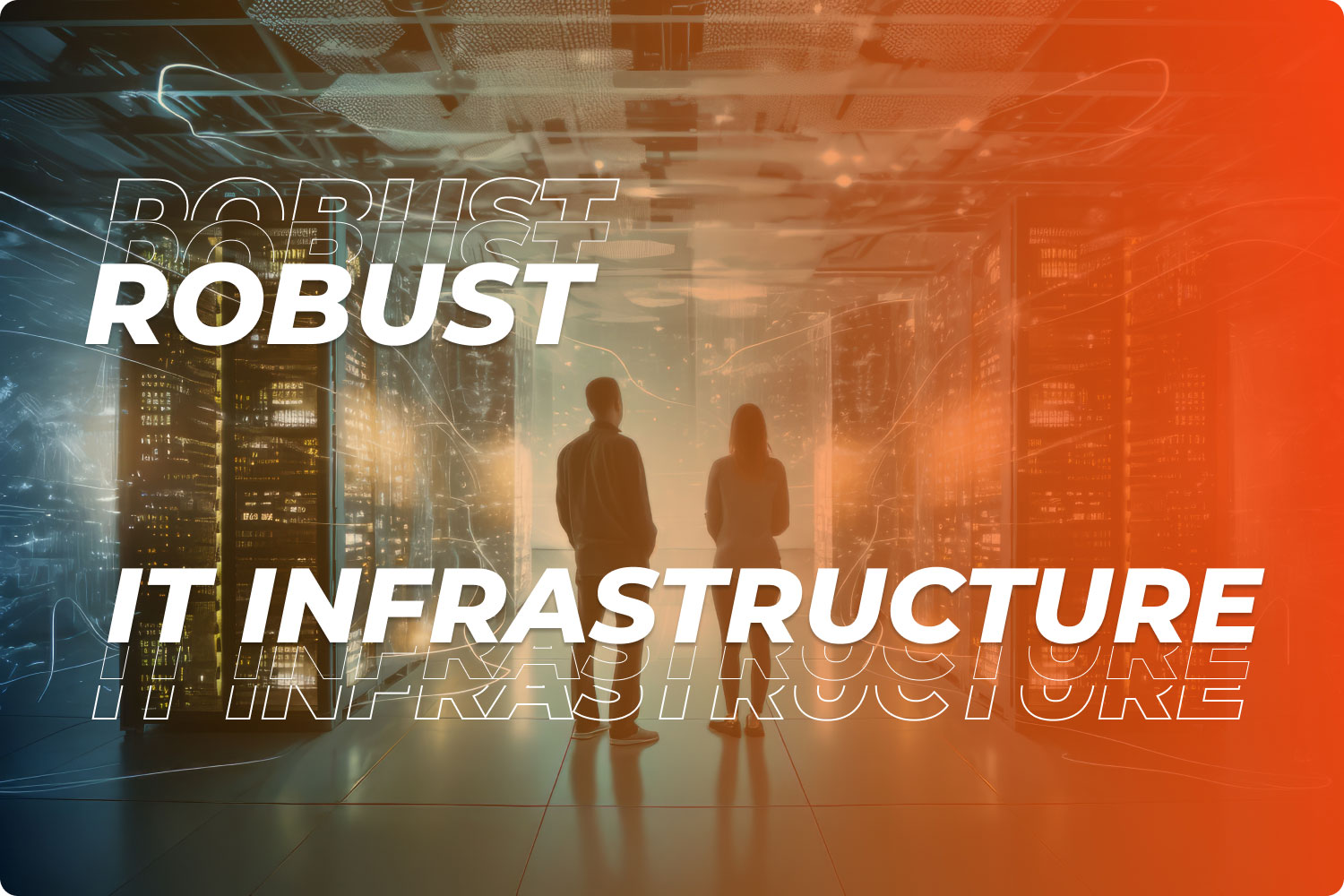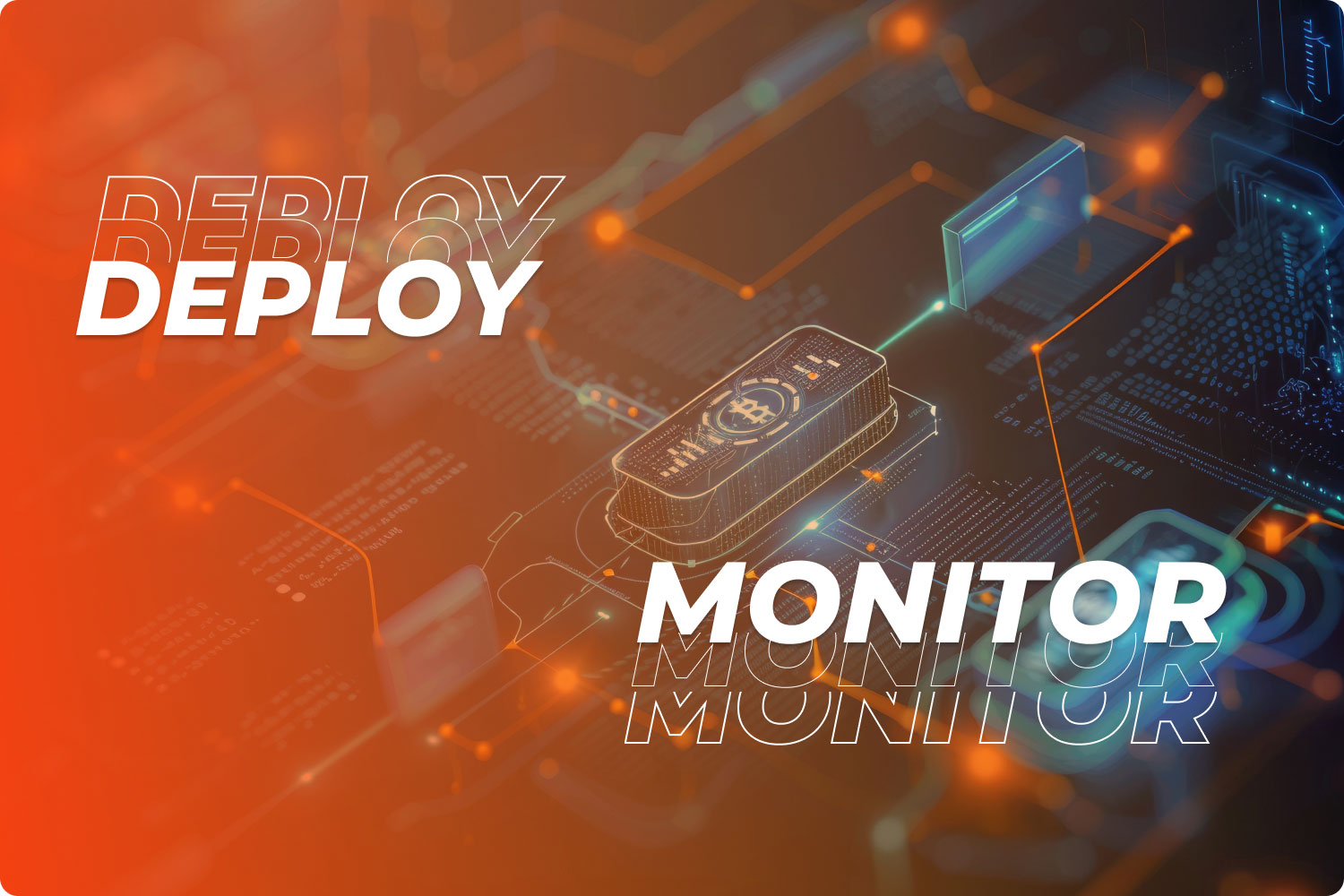In the modern-day business environment, having a robust information technology (IT) infrastructure is a necessity. Such a setup can help companies in Singapore and Hong Kong streamline operations, improve efficiency, and ensure scalable growth. However, to achieve all these objectives companies must comprehend how such a tech setup can be built.
Based on our experience, we’ve found that building such an infrastructure requires that businesses follow a step-by-step approach. During such an approach, multiple factors must be taken into consideration. Analyzing the current tech gap, planning necessary procurement and deployment, and giving training to employees are all common examples.
Given all the complexities involved, it’s possible for the development and deployment of a new IT infrastructure to be a significant challenge. It’s worth mentioning here that such a hurdle cannot be addressed without adequate knowledge. That’s why, in this article, we’ll provide a detailed action plan on how you can set up the right tech infrastructure.
We’ll cover why a robust IT infrastructure is necessary, factors to consider, steps to follow, and more. Let’s begin!
Understanding The Importance of a Robust IT Infrastructure
When it comes to technology and modern-day businesses, having a sufficient and reliable IT infrastructure is something that cannot be overstated. Such an infrastructure is important for companies given that it leads to a lot of benefits, and global IT spending is expected to reach $5.3 trillion by the end of 2024.
We’ve found that with a robust IT infrastructure, firms can ensure seamless connectivity needed for employees regardless of whether they are in-house or remote. Having such connectivity is essential as it allows them to access organizational apps and perform their daily tasks easily. This ultimately increases their productivity.
In addition, businesses rely on a vast amount of data to function optimally. However, managing and keeping such data secure can be challenging. With a robust tech infrastructure, companies have an ample amount of storage space and can protect the stored data using advanced methods like encryption.
Furthermore, as businesses tend to grow their technical needs and requirements often change. Having a robust IT setup can help companies cater to these needs in a seamless manner. Such an infrastructure can make it easier to add new users and services, which ultimately helps with business growth and scalability.
Step-By-Step Guide on Developing a Robust IT Infrastructure
Based on our experience, we’ve found that when it comes to building a robust IT infrastructure, various things need to be considered. Without a step-by-step approach, it’s possible for such things to get overlooked, which can lead to hindrances that threaten business continuity later on. To avoid such a scenario from prevailing, companies in Singapore and Hong Kong should follow a series of steps that include:
1. Understanding Your Business Needs
Before companies in Singapore and Hong Kong begin to develop an IT infrastructure, it’s essential for them to determine what their needs are. When identifying such needs they must ensure that the requirements of each stakeholder are factored in. Apart from this, they must also narrow down the exact reasons why they want a more robust infrastructure.
A few common reasons may include the need for better connectivity, more data storage, stringent security measures, and more. Figuring out the business needs beforehand is essential as it can help specify which aspects of the IT infrastructure are needed.
Having such aspects specified can help companies streamline the procurement and deployment of tech assets and can even help them reduce costs.
2. Define Your Requirements
After the business needs have been met you need to identify the requirements your ideal IT infrastructure will have. Such requirements may include things like storage capacity, network speed, security protocols, applications, and more.
Identifying these requirements will give further aid pertaining to the tech systems you require and will ensure optimal functionality when such systems are deployed. It’s possible for most businesses to overlook this step.
We’ve found that such an approach is often driven by a “going for the best tech” mindset. While there’s nothing wrong with that approach, it leads to an excess consumption of financial resources which can be better used elsewhere.
3. Plan Your IT Infrastructure
Now that both the business needs and tech requirements that, when fulfilled, can help cater to those needs are finalized, it’s time to create an infrastructure plan. An effective IT infrastructure plan is one that accommodates all the key components. We’ll cover the essential ones in detail, but here’s a brief overview of these components:
- Hardware - these are the physical assets that are needed. Routers, computers, servers, hubs, and more are all common examples of such assets. When finalizing these assets, it’s essential to remember that they must align with your business needs and be easy to adapt to, use, and maintain.
- Software - these are the programs and applications that will be a part of your tech setup. These apps and programs will include things like CRM tools, operation systems, management apps and more.
- Network - this is what will make the software and hardware assets function in productive harmony. Network components can be things like extended (WAN), local area networks (LANs), Wi-Fi technologies, and more. Having these components effectively set up will help with smooth data flow and communication, ensuring operational efficiency.
- Data centers - think of this component as a storage facility for your data. This component is essential for the storage, management, and dissemination of your business’s data. It’s essential to ensure quality here as these data centers are what ensure quality.
- Cloud services - with rapid advancements in technology, cloud services are now a necessity for every business. Common examples of such services include online productivity and management tools, shared security solutions, and more.
- Security system - these systems are paramount to ensure that your organizational data, online assets, and apps are not at risk of being exploited by threat actors. Such systems include firewalls, encryption tools, anti-virus software, and more.
When you plan your IT infrastructure based on these components, it’s essential to ensure that they align with your business needs and objectives and that they complement each other, too.
4. Analyze Vendors
The next step towards building a robust IT infrastructure is to analyze the vendor. When companies are doing this, it’s essential to check all parties they are dealing with, including hardware and software vendors, cloud service providers, network solution providers, and more.
We’ve found that the analysis of such vendors can be complicated with a lack of relevant expertise. To conduct analysis effectively, companies should prioritize using the vendor analysis framework. The framework basically outlines different factors that vendors must face. These factors include:
- Cost-effectiveness - the solutions being offered by vendors must be available at feasible and competitive prices.
- Quality - what the vendor has to offer must meet your quality standards and be a step up from what you currently have.
- Delivery - whether one-time or ongoing, the delivery must meet your time specifications and be consistent.
- Regulatory compliance - the vendor must comply with all legal requirements they are subject to.
- Flexibility - there should be a number of options available for most, if not all, of the solutions on offer.
- Technical expertise - the vendor must be an expert and know the ins and outs of what they are selling.
- Customer services - support, in case of queries, bugs, or troubleshooting initiatives, must be readily available.
By analyzing vendors based on these factors companies can ensure that those they procure tech assets from are right for them and that the assets meet their functional and monetary requirements.
5. Choose Hardware and Software
Once a company has analyzed the vendor, they will have an accurate idea of where to procure their tech assets from. When choosing such hardware and software assets, the organization must revisit the business needs and requirements and ensure that the assets align with them.
A key factor to consider when choosing software assets is to ensure that the assets align with the existing programs and applications the company uses, as it can ease adaptation. For hardware, they should consider performance, reliability, scalability, and compatibility.
In cases where the software or hardware does not align with what the firm is accustomed to, experts should ideally analyze how difficult the transition to the newer assets will be and the impact it will have on business continuity.
6. Choose A Network Provider
When it comes to IT infrastructure development, it’s essential to comprehend that a reliable network is the backbone. Organizations, when choosing a network architecture, must consider compatibility with their local area networks (LANs), wide area networks (WANs), or cloud-based network requirements.
In addition, they must also assess the connectivity. For an accurate result pertaining to the quality of the connectivity, various factors must be included in the assessment. Common examples of such factors include wired and wireless connectivity, VPN access for remote employees, and secure guest networks for certain users.
We’ve often found that implementing redundancy and failover mechanisms can help minimize downtime and ensure seamless connectivity.
7. Set Protection and Security Protocols
In today’s world, online threat actors in Singapore and Hong Kong are becoming increasingly sophisticated and are using complex tactics to breach organizational networks for malicious purposes. To avoid falling prey to a scenario, companies ensure the protection of their network, apps, and data.
Such protection can be achieved by having advanced security protocols in place. Common examples of such mechanisms include prevention systems, encryption protocols, regular vulnerability assessments, and employee awareness training. Companies must also develop a comprehensive BCDR.
A business continuity and disaster recovery (BCDR) strategy ensure that operations can continue in the event of natural disasters, falling prey to cybercrime, or system failures.
8. Deploy And Monitor
Once you have all the things mentioned above finalized, it’s time to deploy your IT setup. However, a common mistake that most businesses make is deploying everything at once. This can have a negative impact on the operation and can even momentarily hinder business continuity.
To avoid such a scenario from prevailing, it’s essential to ensure that the deployment is carried out in a phase-wise approach. Such an approach means that organizations should prioritize transitioning over to newer systems with their least critical assets first, as it’s more feasible.
Such feasibility stems from the fact that transition over with the least critical assets causes fewer disruptions and ensures that employees have ample time to adjust to newer systems. Once your IT setup is ready, it's time to put a solid monitoring and performance plan in place.
Start by using monitoring tools to keep an eye on system performance, network traffic, and security events as they happen. Regularly review the data you collect to spot any slowdowns, security risks, or areas that need improvement.
By staying on top of this, you can fine-tune your infrastructure, boost efficiency, and tackle any issues before they turn into bigger problems.
Building a Robust IT Infrastructure in Singapore & Hong Kong
Companies keen on the development of a robust IT setup in Singapore and Hong Kong must consider the region’s tech climate. For instance, the internet penetration rate in Singapore is 96%. In Hong Kong the rate is 95.6%. Therefore, organizations that want to have a robust IT infrastructure in these regions should prioritize network reliability.
In addition, threat actor activity has also increased in both Hong Kong and Singapore, meaning that advanced cybersecurity solutions should also be a part of the tech setup. Apart from these factors, and others similar to them, businesses must also ensure that the IT infrastructure is in line with the laws and regulations in both regions.
Conclusion
Building a solid IT infrastructure isn’t just about tech; it’s a smart strategy that fuels business growth and keeps things running smoothly. You need to start by really understanding what your business needs, clearly defining what’s required, and carefully planning each part, from hardware and software to networks and security.
In fast-paced business environments like Singapore and Hong Kong, having a well-thought-out IT infrastructure is key to staying competitive. By following this step-by-step approach, you’ll equip your business with the tools and resilience needed to adapt to changes, protect your assets, and keep growing.
If you are looking to develop a top-notch IT infrastructure, get in touch with FunctionEight Singapore and FunctionEight Hong Kong today. Contact us, get a free consultation, and push the boundaries of excellence today!







